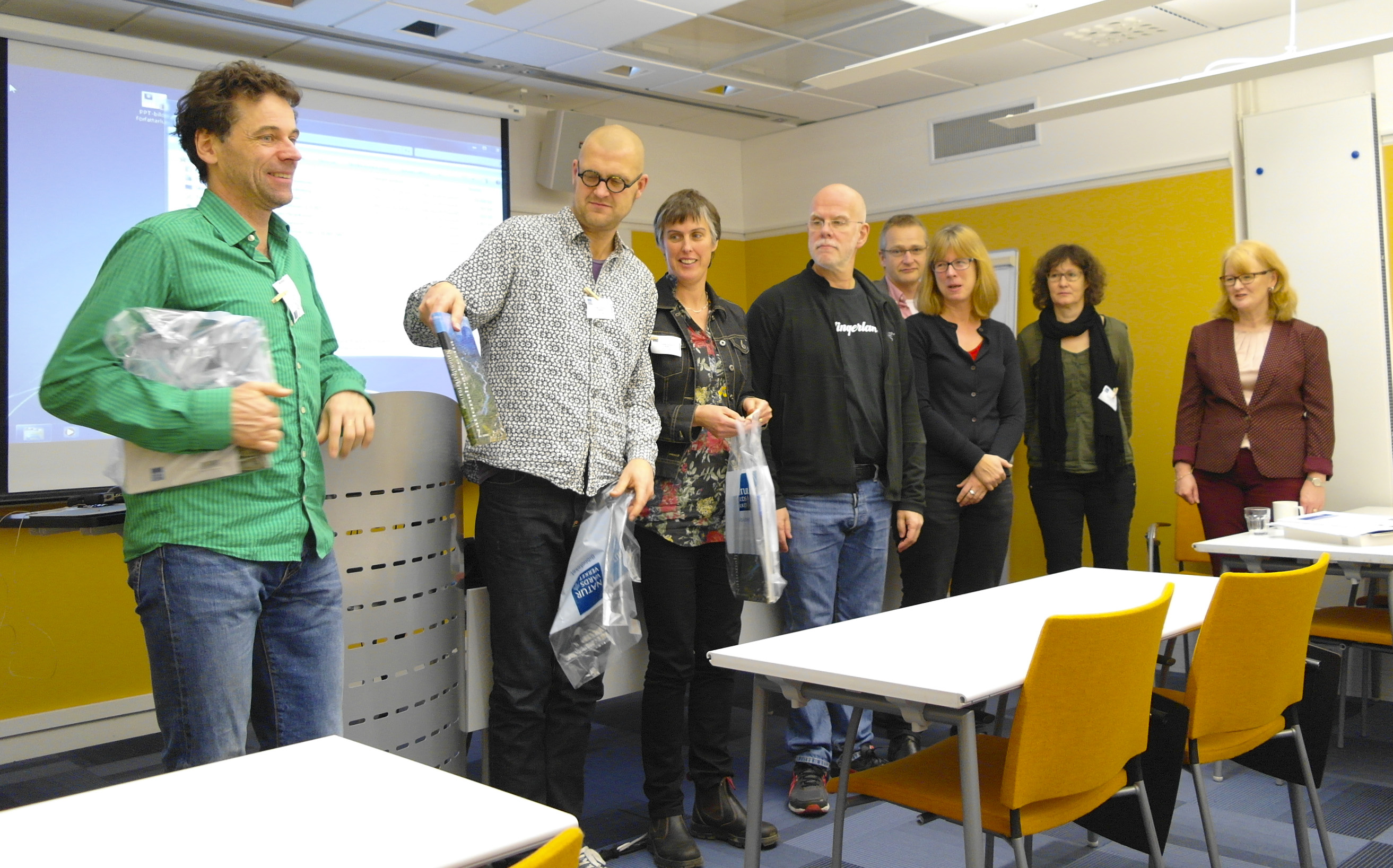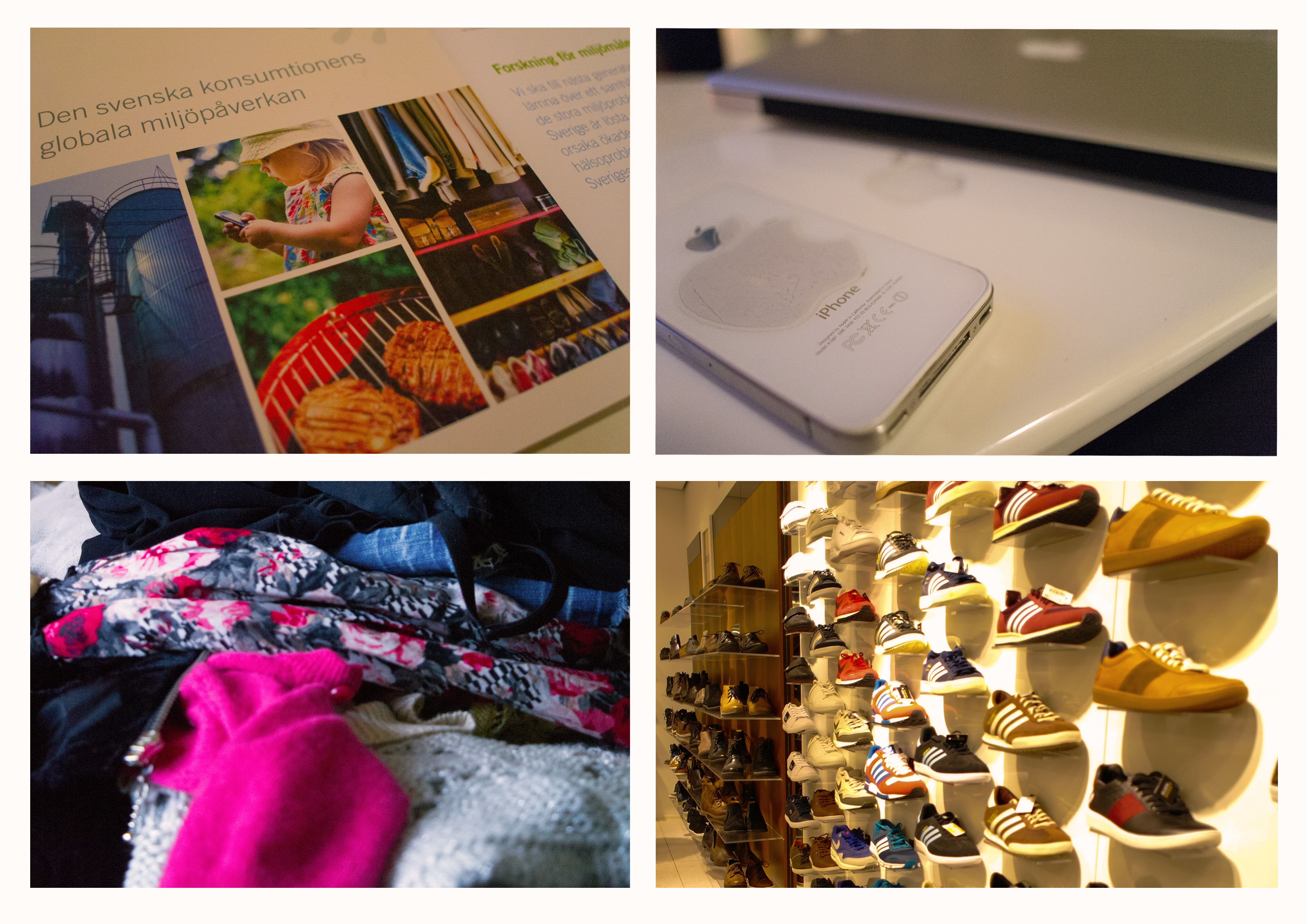The wardrobe is full of clothes with the price tags still on, shoes that never have been worn and electronic products that are only one year old and already out-dated and considered waste. The money burns in your pocket, making you buy more and more.
Early one day in December, some researchers meet at the Swedish Environmental Protection Agency with a joint purpose: to discuss their research about consumption. Familiar with one another they greet and hug in the breakfast room. A conference room awaits them, crowded with journalists asking themselves the same question: What news are the researchers going to tell me today?
In the conference room a table is set out with all the reports with which one could write a book about the environmental goals of Sweden. The report about Swedish consumption alone enfolds on 110 pages and shows a front page with pictures of kids, factories, red meat and a closet, all to set the scene of consumption.
Many years have passed since environmental concerns first appeared on the political agenda. Though by now they have grown large in number. Consumption rates are higher than ever before. Researchers and decision makers have become aware that consumption plays a big role in the human impact on this planet. It influences clean water, climate emissions and waste, for example. The steps have to be bigger if the environmental goals set by the Swedish Government for 2020 as well as the global goals shall be reached.
“Every year we revive the environmental corpses,” says Anders Wadeskog, economist at Statistics Sweden, the last speaker on the scene. He is glad to see a never-ending flow of people engaged in environmental concerns and never giving up, even though they kept discussing the same issues during the past decades. The question is whether there actually is anything new to say about environment and consumption or if the concept is being extremely washed out, so washed out that there will soon be no colour left for the debate.
However, it is still a mystery whether consuming a lot makes one happier. In his team research about the behaviour of Gothenburg’s inhabitants, Jörgen Larsson, Doctor of Physical Resource Theory at Chalmers, seems to have a hard time finding a significant relation between those consumers with big and those with smaller emissions in connection to their well-being. Nothing proves that if you reduce your meat or flight consumption this would equal with less happiness.
Nonetheless, feelings are a strong incentive for consumption, but the social drivers of consumption vary. To give examples Greger Henriksson, environment ethnologist at the Royal Institute of Technology speaks about the jogging shoe which we had one pair of in the beginning. Today we have several pairs, one in every colour and one for every scenario, one for the gym, one for work, one for running and one for walking. Mobile phones only lasts two years or even shorter. Although we do not yet collect them in several colours, we change the one we have frequently just to match our life at that time.
Henriksson has researched the choices behind buying and discarding actions. He points out several social drivers to consumption, the number one being “the money burning in our pocket.” Having the economical ability to buy as much as we want makes us consume without even noticing it in the checking account. Other drivers are fashion trends and the need to change one product to get a stylistic match with other products you already own. A current example of this is Apple and all its different i-products which allows the i-fans to feel superior when having them all.
It is an altruistic view that triggers the way we dispose clothes we no longer want. Eva Gustafsson, Associate Professor of Business, interviewed 50 people during an introduction of a textile return in Gekås Ullared, which almost nobody attended. She realized that people give clothes out of concern for those who have a greater need, not because of concerns for the environment. It feels good to give. In many cases however, the people whom the western consumers set aside their clothes for, are the same people who work in the factories producing those very shoes in pink, white electronics and multicolour textiles. They are even the same people who later will recycle the electronic waste, at the expense of their health. This fact is often forgotten.
Before everybody leaves, people stand outside and eat a fast food sandwich which leaves a mess on the floor. It seems there is no time to sit down. Neither are there any chairs. In the hurried exchange between researchers and journalists, other layers of the yet to be painted picture of the patterns of consumption emerge. At the end of the day the true colour of the consumer shows in the shopping bag when leaving the store. Consumer choices are still to be discovered in many ways. However, this event created a clearer picture about why we make the choices we make. It showed that the price of cheap and regular consumption is not paid in money in the west but in the health and living conditions of others. But as long as consuming more than we need “feels good” and as long as it is possible to clear our conscience by giving the things we do not want to someone in greater need, we are all right, right?
By Katarina Wohlfart

The researchers in consumption talking about their newest findings in the area later being thanked by the staff at the Swedish Environmental Protection Agency.
Publicerad på Type Magazine, Örebro Universitet i december 2013.


5 Comments